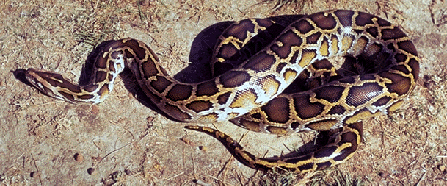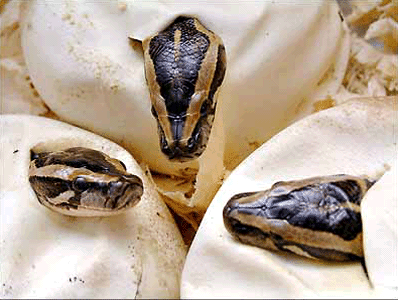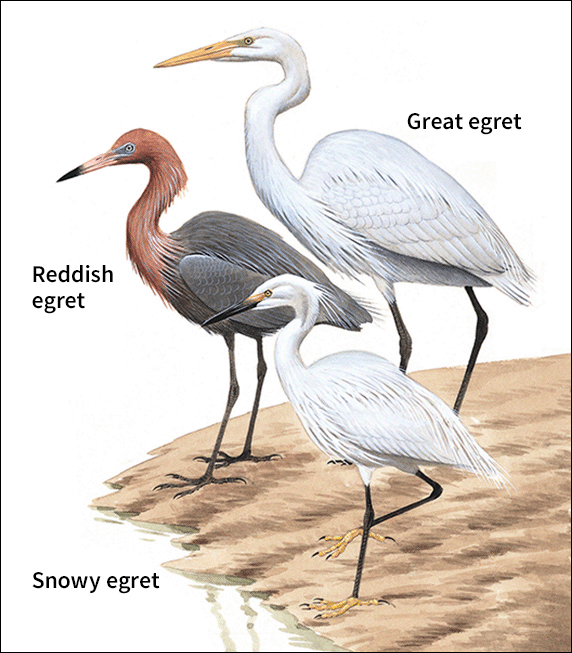Snake Hunt in Florida Nabs 68 Pythons
Friday, February 22nd, 2013February 22
The Florida Fish and Wildlife Commission announced this week that 68 Burmese pythons had been captured in the Florida Everglades in its 2013 Python Challenge. The Burmese python, the target of the hunt, is an invasive species–that is, it is not native to Florida. Most of the pythons in the wild in Florida are either snakes that escaped from captivity or pets that were deliberately released into the wild when owners could no longer care for them. Because the Burmese python is not native, it has no predators itself. Thus, the python has spread quickly throughout the Everglades, causing harm to the ecosystem and to native species in the region. According to a 2012 study, sightings of bobcats, opossums, rabbits, raccoons, and other mammals in the Everglades are down as much as 99% in areas where pythons live.

The Burmese python, a subspecies of the Indian python shown, has spread quickly through the Florida Everglades, threatening the ecosystem and the animals native to the area. (J. H. Robinson, Animals Animals)
Florida’s Fish and Wildlife Commission held its first python hunt from January 12 to February 10 in 2013. Any adult who wanted to try to harvest the nonvenomous snake was encouraged to do so, and nearly 1,000 people, mostly amateurs, signed on. Given how well camouflaged the snake is in the Everglades environment, experts were surprised that the hunt had found 68 pythons in the wild by the end date.
Most of the captured snakes were humanely euthanized. However, several snakes–including the longest, at 11 feet (3.3 meters)–were fitted with transmitters and released back into the wild. Scientists planned to track these snakes, hoping that they would lead to nests of breeding females, who could also then be captured before their young went into the wild.
Additional World Book articles:




